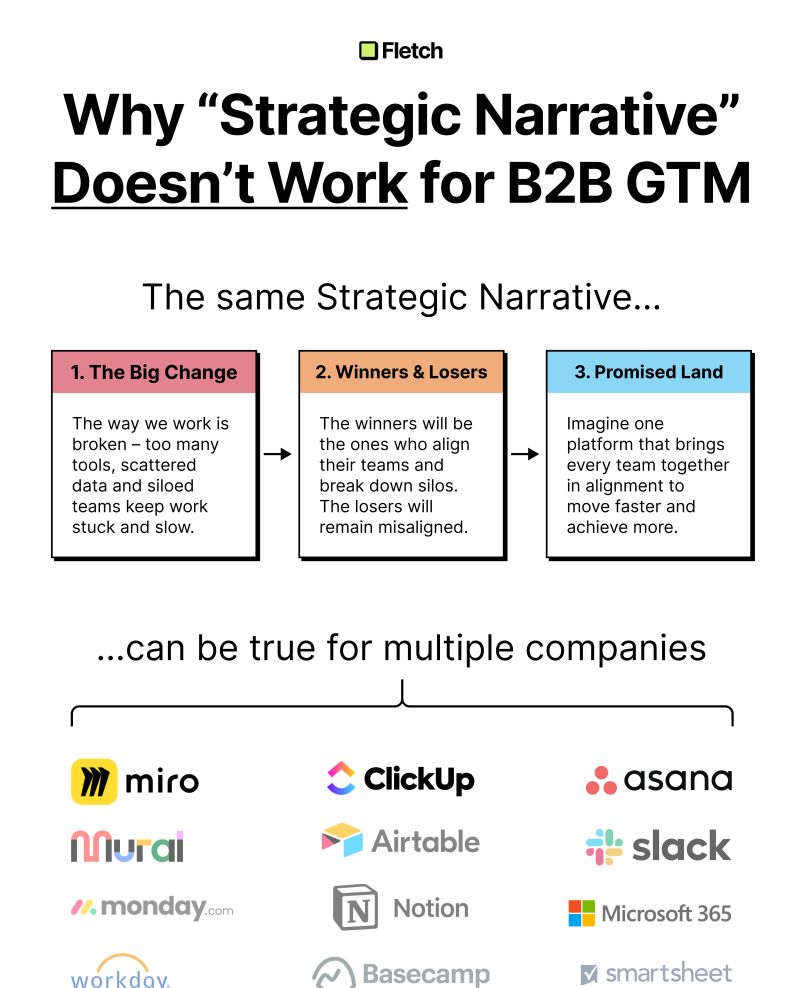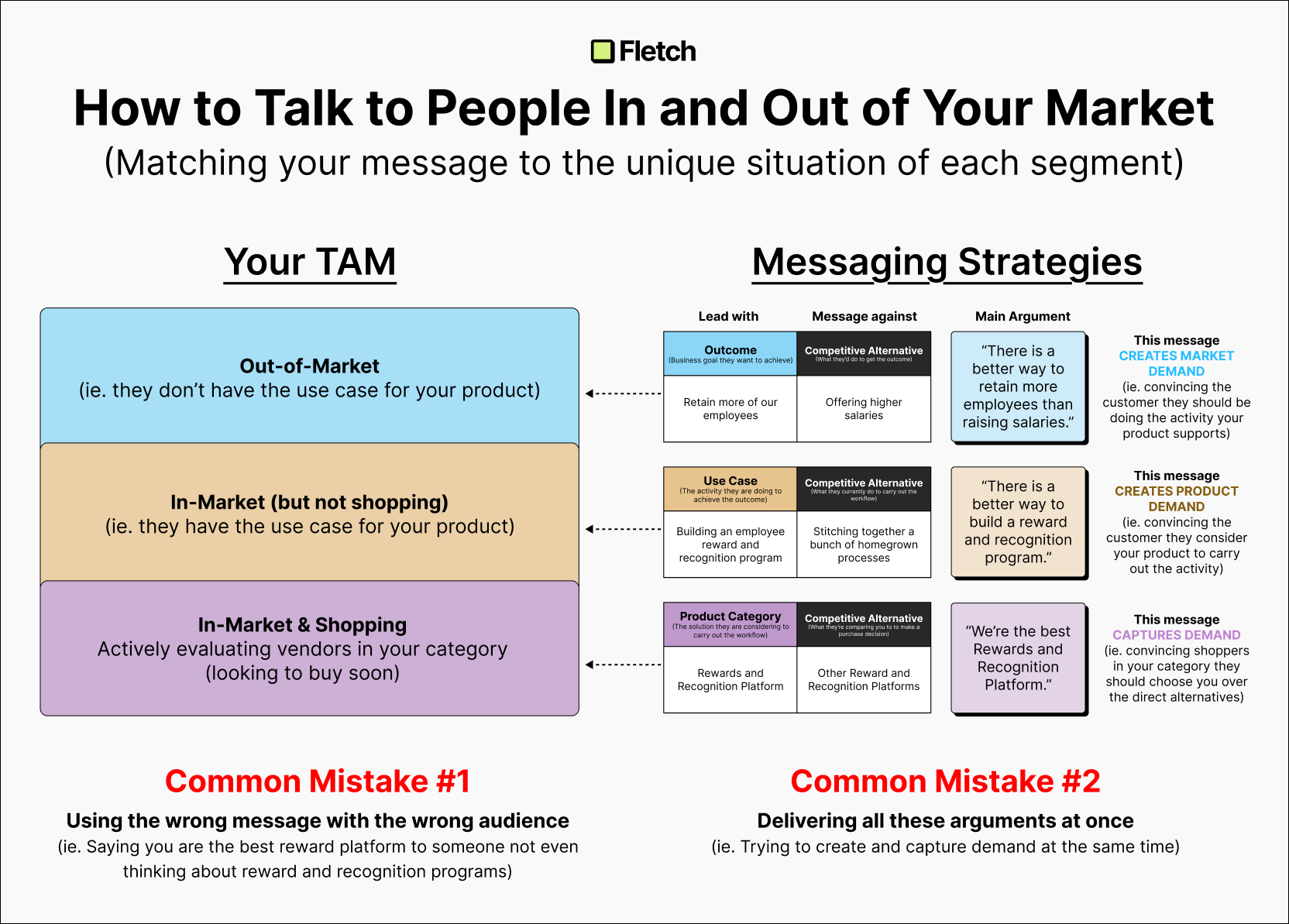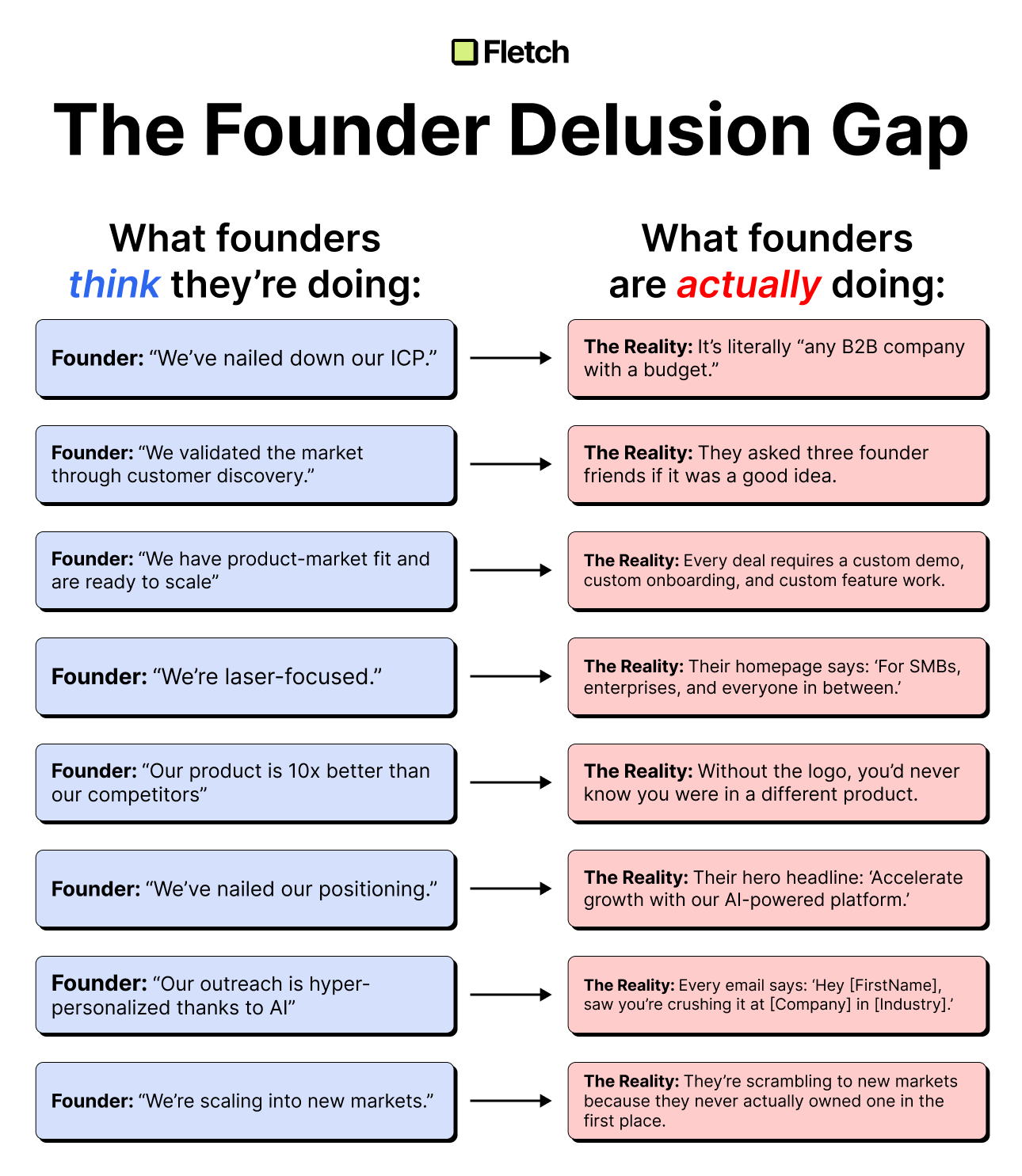Why “Strategic Narrative” Doesn’t Work for B2B GTM


I love Andy Raskin. But creating a strategic narrative won’t work in your B2B go-to-market. Here’s why.
How often have you heard this?
"You should ‘tell a story’ and ‘define a narrative’ to position your product!"
Maybe something about....
→ a big change in the world
→ naming a new game
→ creating a category
I'm gonna guess... more often than you can count! 🧮
But there's a big problem for B2B startups using a "strategic narrative" to position their products:
The stories are not unique.
→ "Data is the new oil.”
→ “The way we work is broken.”
→ “Customers expect more than ever.”
→ “We're living in an instant economy."
→ “In today’s world, people can work from anywhere.”
🥱🥱🥱🥱🥱
The thing is...
If the stories are so broad that even completely unrelated product categories can claim them...
...how do they help your market to figure out, “is this for me?” 🤔
You still have to answer the most basic questions your market wants to know:
👉 What you are
👉 What your product does
👉 What problem it can solve
👉 How your product is better/different
So if the strategic narratives are identical...
And you still need basic positioning components...
Then what’s the point of the narrative??
So here's my advice for B2B startups:
Don’t bother creating a story about a big change in the world.
(That might get you VC money or a TEDx talk...
But it won’t bring you traction in the market.)
What you need is...
→ a distinguishable problem you can solve
→ a better way to solve it
→ a clear message to communicate it
Unfortunately – or fortunately, it’s as simple – or as hard – as that.
––––––––––––––––––––––––––
P.S.Nota bene / necessary disclaimer: This might be splitting hairs (it’s not though), but I STRONGLY ENCOURAGE B2B startups to have an original point of view, because that point of view to the market is ultimately your differentiation. I always ask in the workshops if the problem framing we’ve put together is something the founder would get up on a stage and rally about. But here’s the ultimate catch: naming a big change in the world is not a unique point of view.
P.P.S. And since we’re doing disclaimers… Andy deserves all the credit where it’s due – his framework does work, but only in one VERY specific case: pitching directly to the CEO. If you’re lucky enough to get in front of that kind of a decision-maker (which most startups aren’t, not in any scalable way), a strategic narrative can be really powerful. Most CEOs are far enough removed from operations that this level of abstraction works. But in all other scenarios – people actually care about what the product does.

Ben Wilentz
Founder, Stealth Startup




